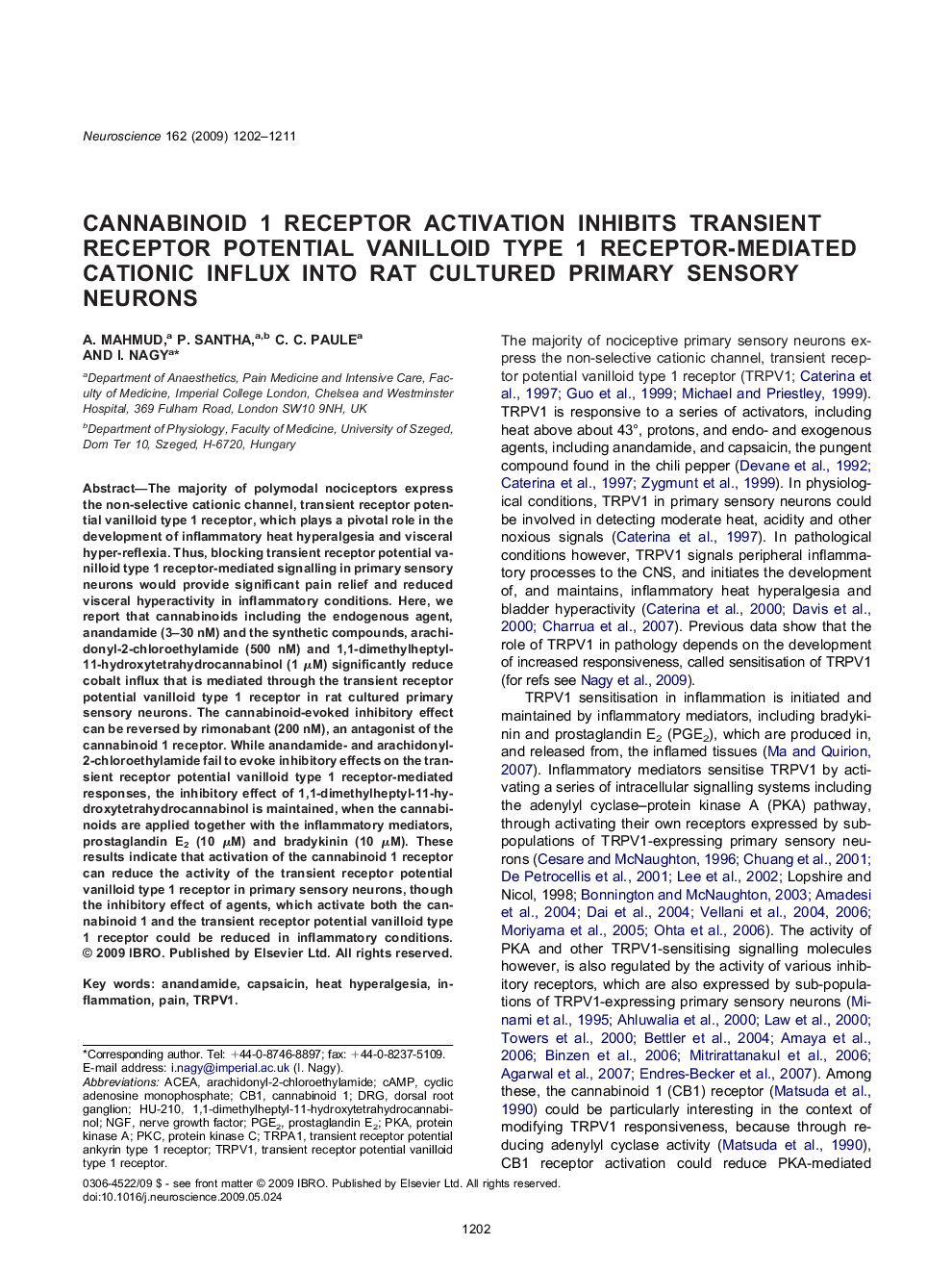| Article ID | Journal | Published Year | Pages | File Type |
|---|---|---|---|---|
| 4340240 | Neuroscience | 2009 | 10 Pages |
The majority of polymodal nociceptors express the non-selective cationic channel, transient receptor potential vanilloid type 1 receptor, which plays a pivotal role in the development of inflammatory heat hyperalgesia and visceral hyper-reflexia. Thus, blocking transient receptor potential vanilloid type 1 receptor-mediated signalling in primary sensory neurons would provide significant pain relief and reduced visceral hyperactivity in inflammatory conditions. Here, we report that cannabinoids including the endogenous agent, anandamide (3–30 nM) and the synthetic compounds, arachidonyl-2-chloroethylamide (500 nM) and 1,1-dimethylheptyl-11-hydroxytetrahydrocannabinol (1 μM) significantly reduce cobalt influx that is mediated through the transient receptor potential vanilloid type 1 receptor in rat cultured primary sensory neurons. The cannabinoid-evoked inhibitory effect can be reversed by rimonabant (200 nM), an antagonist of the cannabinoid 1 receptor. While anandamide- and arachidonyl-2-chloroethylamide fail to evoke inhibitory effects on the transient receptor potential vanilloid type 1 receptor-mediated responses, the inhibitory effect of 1,1-dimethylheptyl-11-hydroxytetrahydrocannabinol is maintained, when the cannabinoids are applied together with the inflammatory mediators, prostaglandin E2 (10 μM) and bradykinin (10 μM). These results indicate that activation of the cannabinoid 1 receptor can reduce the activity of the transient receptor potential vanilloid type 1 receptor in primary sensory neurons, though the inhibitory effect of agents, which activate both the cannabinoid 1 and the transient receptor potential vanilloid type 1 receptor could be reduced in inflammatory conditions.
